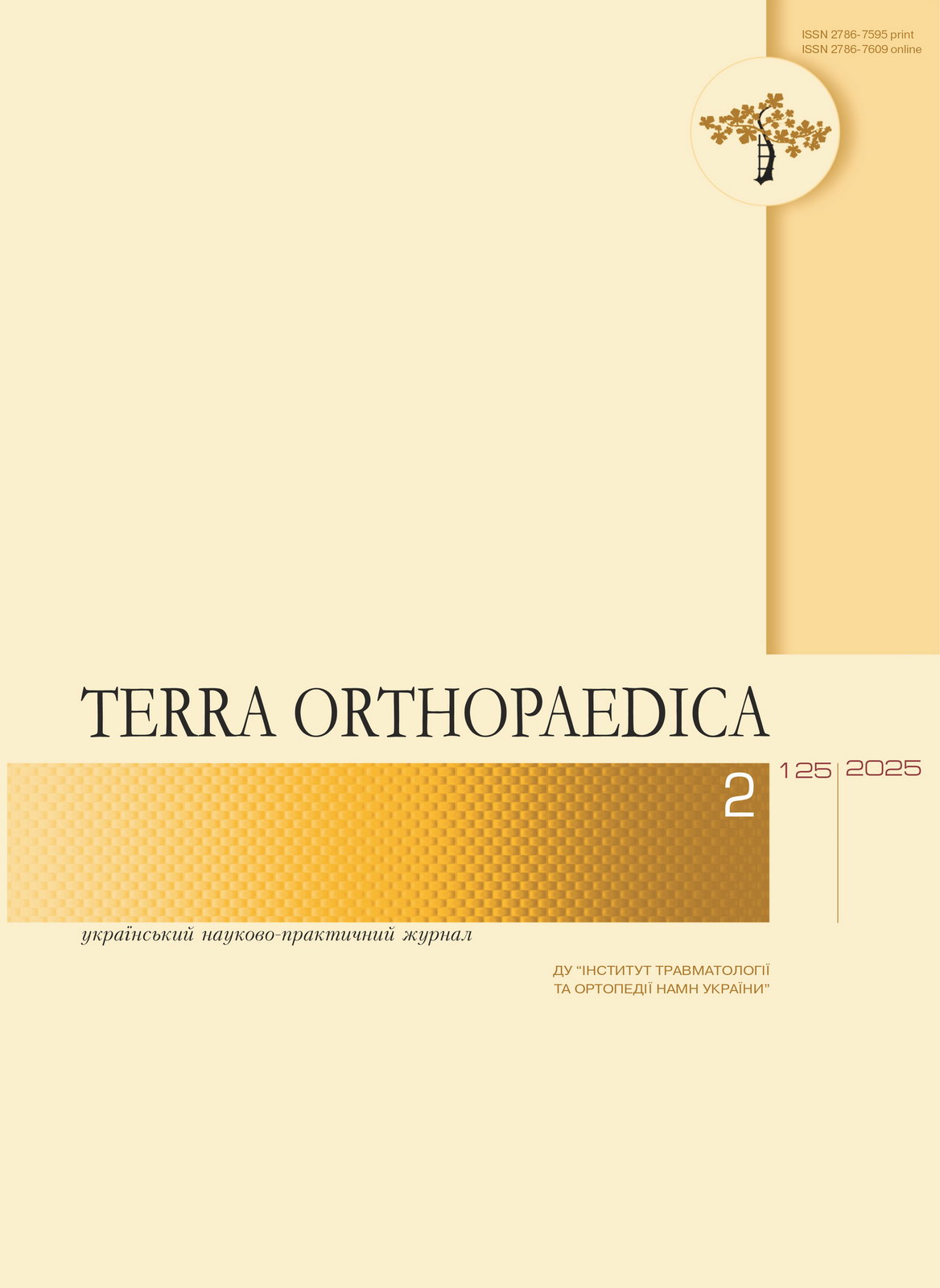Abstract
Objective. The purpose of the study was to evaluate the possibility of closing defects of the covering tissues that arise during the elimination of three-dimensional dermato-teno-arthrogenic contractures of the proximal interphalangeal joint using a direct lateral skin-fatty digital flap with randomized blood supply, and to develop a surgical approach enabling elimination of all contracture components and one-stage closure of palmar skin defects of the finger. The article presents the outcomes of surgical treatment of patients using the developed method.
Materials and Methods. Fifteen patients with post-traumatic persistent three-dimensional dermato-teno-arthrogenic contractures of the proximal interphalangeal joints, affecting 18 long fingers, were under supervision. All patients underwent clinical, laboratory, and radiological examinations. All patients underwent reconstructive and restorative surgery on 18 long fingers: tenolysis, arthrolysis, tendon lengthening (if necessary), and closure of covering tissue defect, which arose during the surgery, with direct lateral skin-fatty digital flaps with randomized blood supply.
Results. Outcomes of the surgical treatment for persistent dermato-teno-arthrogenic contractures of the proximal interphalangeal joint were evaluated according to standard orthopedic and surgical principles.
Conclusions. Closure of soft-tissue defects over functionally significant structures of the finger is possible when using an “H”-shaped approach for tenolysis and arthrolysis, combined with the elevation and transposition of a direct lateral skin-subcutaneous digital flap with randomized blood supply. The technical simplicity and reliability of this method for closing palmar skin defects that occur during the elimination of persistent three-dimensional contractures of the proximal interphalangeal joints using a direct lateral digital skin-subcutaneous flap with randomized blood supply allows it to be recommended for use.
References
Cho H, Ono S, Chung KC. Management of scar contractures of the hand—our therapeutic strategy and challenges. J Clin Med. 2024;13:1516. doi:10.3390/jcm13051516.
Tucker S. Reconstruction of severe hand contractures. Indian J Plast Surg. 2011;44(1):59–67. DOI: 10.4103/0970-0358.81438
Houshian S, Jing SS, Chikkamuniyappa C, Kazemian GH, Emami-Moghaddam-Tehrani M. Management of Posttraumatic Proximal Interphalangeal Joint Contracture. The Journal of Hand Surgery. 2013 Aug;38(8):1651–8. DOI: 10.1016/j.jhsa.2013.03.014
Venkataswami R. Surgery of the injured hand towards functional restoration. New Delhi: Jaypee Brothers Medical Publishers; 2010. 585 p.
Strickland J, Graham T. The hand. Philadelphia: Lippincott Williams & Wilkins; 2005. 492 p.
Kappel D, Burech J. The cross-finger flap: an established reconstructive procedure. Hand Clin. 1985;1(4):677–83.
Фурманов АЮ. Клинические особенности формирования вторичных сгибательных контрактур проксимальных межфаланговых суставов трехфаланговых пальцев кисти в условиях посттравматической хронической ишемии. Клин Хирургия. 2009;(6):46–50.
Furmanov AY. Clinical features of secondary flexion contractures of the PIP joints of the fingers under posttraumatic chronic ischemia. Clin Surg. 2009;(6):46–50.
Ulkur E, Uygur F, Karagöz H, Celiköz B. Use of free dorsoulnar perforator flap in the treatment of postburn contractures of the fingers. Burns. 2006;32(6):770–5. doi:10.1016/j.burns.2006.01.020.

This work is licensed under a Creative Commons Attribution 4.0 International License.
